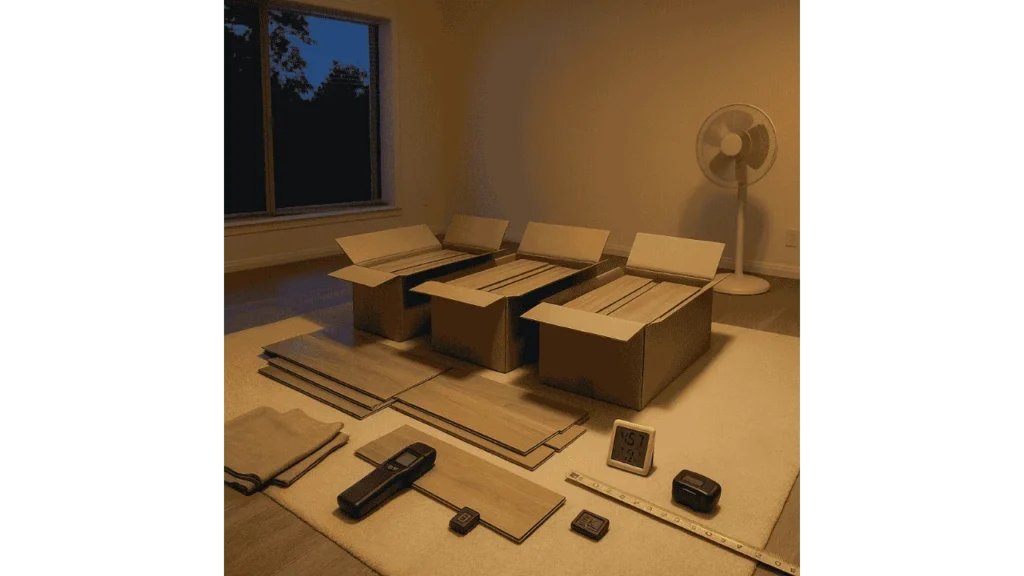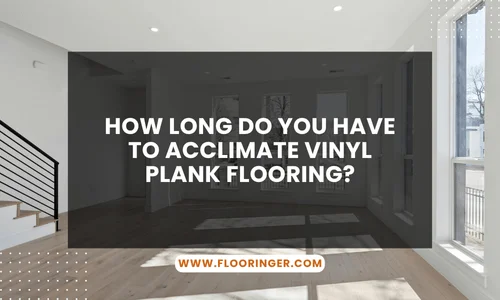Vinyl plank flooring is a popular choice for homeowners due to its durability, affordability, and stylish appearance. However, as someone who’s worked with floor installations across various climates, I can’t stress enough the importance of acclimation before installation. Allowing your flooring to adjust to the room’s temperature and humidity is essential for ensuring a smooth install and long-term performance. Skipping this step can lead to expansion, contraction, or even warping.

How Long to Acclimate Vinyl Plank Flooring?
The typical acclimation period ranges from 24 to 48 hours. However, this can vary based on room conditions and product specifications. Keep the unopened boxes of vinyl planks in the room where they’ll be installed, and maintain a stable temperature of 65-85°F and 35-70% humidity. This helps the planks reach equilibrium with the environment before they’re laid down.
According to Frank Williamson, a senior flooring installer with over 20 years of experience,
“The number one reason people run into post-installation issues with vinyl plank flooring is skipping the acclimation step. It doesn’t take long but saves you so much trouble in the long run.”
Factors That Influence Acclimation Time
A few key factors influence how long vinyl flooring needs to acclimate. If your room was recently renovated, especially with drywall or fresh paint, the added moisture may require a longer acclimation period. Basements, unheated rooms, or spaces with wide humidity swings are also more prone to causing issues. Always defer to the manufacturer’s specific instructions to avoid complications.
Read More: How to Choose Vinyl Plank Flooring?
Best Practices for Acclimation
Lay the boxes flat and spaced apart to allow air to circulate. Avoid stacking them tightly or near direct heat sources or cold concrete floors, which can affect expansion patterns. Before installation, inspect planks for any signs of warping or cupping. Taking this step can save you from having to redo sections later.
Flooring technician Maria Lopez, who specializes in resilient flooring solutions, explains,
“Acclimation isn’t just about temperature, humidity plays a huge role too. You want the planks to breathe in the same environment they’ll live in.”
What Happens if You Skip Acclimation?
Skipping acclimation might seem tempting to speed up the process, but it often leads to expansion and contraction issues that affect the appearance and function of your floor.
Expansion and Contraction
Vinyl, though less reactive than hardwood, still expands and contracts. Without proper acclimation, planks can lift at the edges, develop gaps, or buckle. This is especially common in rooms exposed to sunlight or shifting humidity levels.
Adhesion Problems
For glue-down vinyl, skipping acclimation can weaken the bond between adhesive and planks. Inconsistent temperature or moisture can prevent the glue from curing correctly, leading to uneven surfaces.
Warranty Concerns
Most manufacturers include acclimation in their warranty conditions. If problems arise and it’s clear the flooring wasn’t acclimated properly, your warranty could be voided, leaving you to cover repairs out-of-pocket.
Final Takeaways
Acclimating vinyl plank flooring may feel like a small detail, but it’s one of the most important steps in a successful installation. By allowing your planks to adapt to the room’s conditions, you ensure stability, appearance, and product longevity. For any flooring project, whether it’s a living room, kitchen, or basement, take the time to acclimate. It’s a simple way to protect your investment and enjoy your beautiful new floors without surprise issues down the road.
